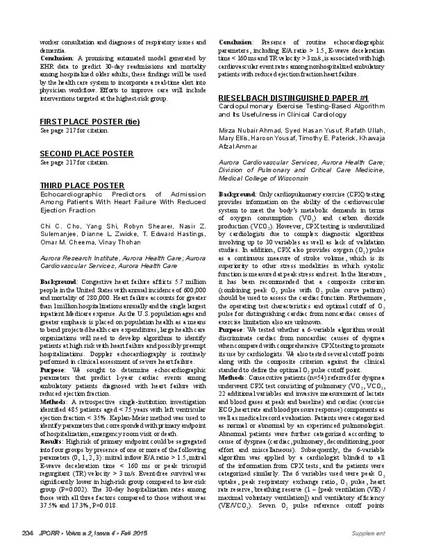
- congestive heart failure,
- ejection fraction,
- echocardiography
Background: Congestive heart failure afflicts 5.7 million people in the United States with annual incidence of 600,000 and mortality of 280,000. Heart failure accounts for greater than 1 million hospitalizations annually and the single largest inpatient Medicare expense. As the U.S. population ages and greater emphasis is placed on population health as a means to bend projected health care expenditures, large health care organizations will need to develop algorithms to identify patients at high risk with heart failure and possibly preempt hospitalizations. Doppler echocardiography is routinely performed in clinical assessment of severe heart failure.
Purpose: We sought to determine echocardiographic parameters that predict 1-year cardiac events among ambulatory patients diagnosed with heart failure with reduced ejection fraction.
Methods: A retrospective single-institution investigation identified 485 patients aged < 75 years with left ventricular ejection fraction < 35%. Kaplan-Meier method was used to identify parameters that corresponded with primary endpoint of hospitalization, emergency room visit or death.
Results: High risk of primary endpoint could be segregated into four groups by presence of one or more of the following parameters (0, 1, 2, 3): mitral inflow E/A ratio > 1.5, mitral E-wave deceleration time < 160 ms or peak tricuspid regurgitant (TR) velocity > 3 m/s. Event-free survival was significantly lower in high-risk group compared to low-risk group (P = 0.002). The 30-day hospitalization rates among those with all three factors compared to those without was 37.5% and 17.3%, P = 0.018.
Conclusion: Presence of routine echocardiographic parameters, including E/A ratio > 1.5, E-wave deceleration time < 160 ms and TR velocity > 3 m/s, is associated with high cardiovascular event rates among nonhospitalized ambulatory patients with reduced ejection fraction heart failure.
